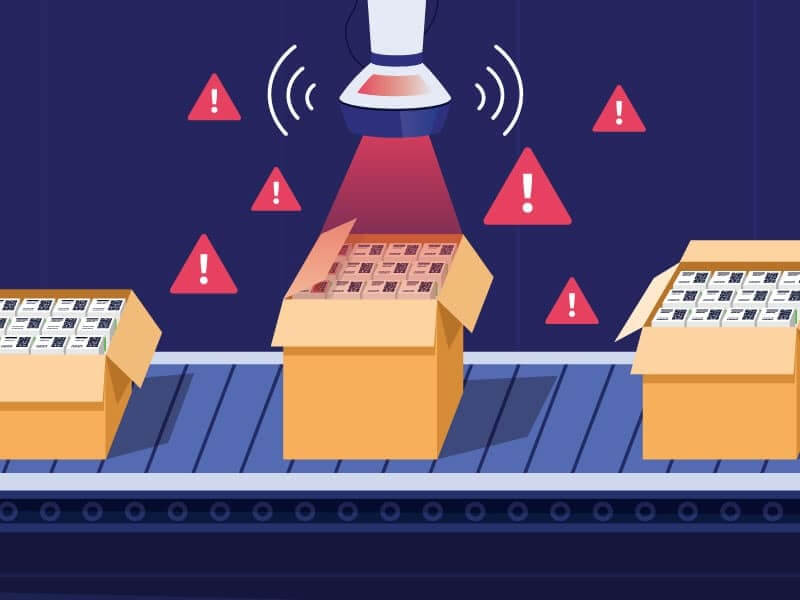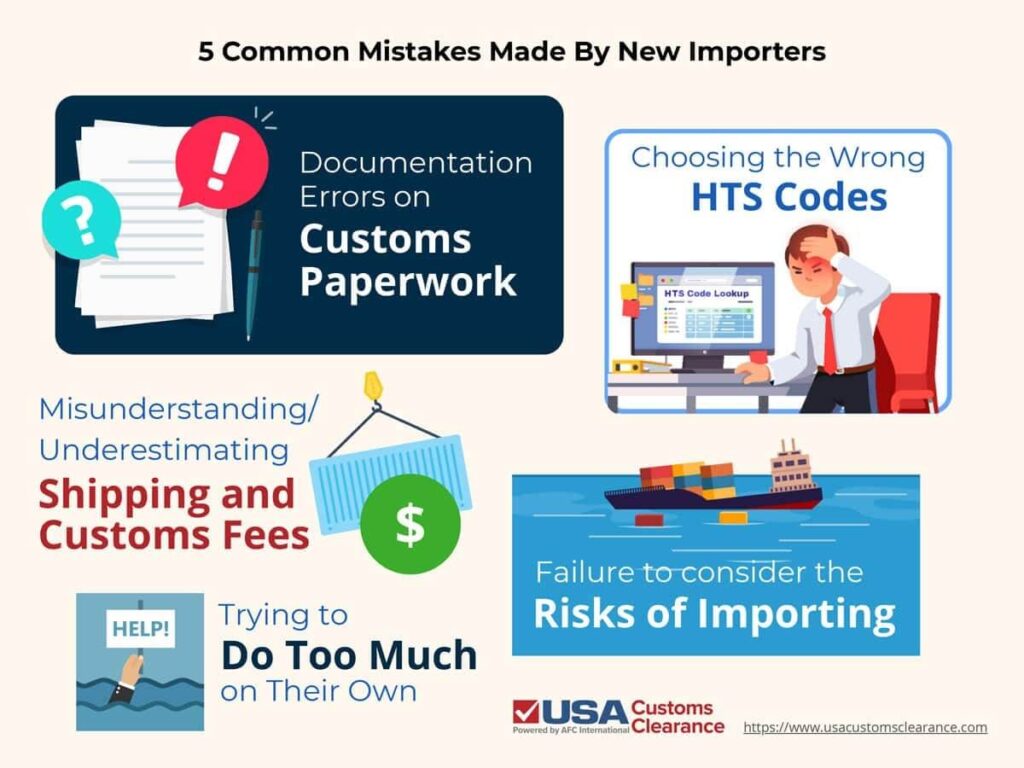
Between paperwork, classifying goods accurately, and calculating fees, very little about the importing process could be called ‘simple’. Tariffs and strained relationships between the United States and its trade partners only serve to complicate this process further. With so many potential issues to address, it’s easy for new and inexperienced commercial importers to make expensive mistakes.
Key Takeaways
In this article, I’ll go over five common mistakes that new importers often make and ways to avoid them.

Thorough documentation is essential to the US customs clearance process. There are several documents that Customs and Border Patrol (CBP) and other government agencies require from importers, including:
These are just a few of the documents importers must fill out on a per-shipment basis, and there’s plenty of room for expensive errors. For instances, failure to submit an ISF on-time and accurately is a common mistake, carrying a fine of up to $5,000 from CBP.
Another type of documentation error involves classifying your imported goods correctly for duty calculations, and is significant enough to warrant a section of its own.
Related: What Documents Do I Need to Import and Export?
The Harmonized Tariff Schedule (HTS) of the United States contains thousands and thousands of codes used to classify products and materials sourced from outside the country. These codes are also used to determine duty rates and identify any tariffs on the items in question.
Ultimately, the responsibility for using the correct code(s) is upon the importer of record (IOR) and it can be easy to get wrong, especially on some of the most popular consumer goods. Let’s look at an example.
Computer monitors are described in chapter 85 of the HTS. Certain flat panel monitors with a video display measuring no more than 34.29 cm diagonally are classified under the HTS code 8528.59.1500 and carry no general rate of duty.
However, that same monitor with a screen larger than 34.29 cm is classified under the code 8528.59.2300 and has a 3.9% duty rate. Now, imagine you’re importing hundreds of these larger monitors for resale, but you accidentally use the code for the smaller ones on your documents.
If CBP inspects your shipment and finds the error, several consequences can occur. Among them are:
This mistake can also work in the other direction. We’ve worked with many importers who found they were overpaying duties due to incorrect HTS codes. In some cases, that money can be recovered from CBP. However, it’s more common for those funds to be irrecoverable. This is one of many reasons for importers to trust an experienced brokerage firm with this aspect of the importing process.

Not Sure if You've Overpaid Duties and/or Tariffs? Ask Our Experts.
Our 45 Minute Licensed Expert Consulting Will Personally Guide You.
I touched on customs fees such as duties and tariffs in the previous section. Individuals and businesses who are new to importing are often unfamiliar with these charges, which can create misunderstandings between the importer and their carrier under certain circumstances.
For instance, a relatively new importer we assisted received a one-two punch on a recent shipment.
What happened could be described as a worst-case scenario. Since the importer tried to save money by essentially acting as their own broker, they ended up being on the hook for:
A licensed customs broker would have been able to anticipate these issues to provide greater clarity about customs fees and supporting documentation, or even avoid the inspection by advising shipment via full container load.
As of this writing, this issue also applies to experienced importing businesses due to uncertainty surrounding tariffs levied via recent executive actions. We had another customer recently who has consistently brought the same items into the country for years, only to be surprised by a $30,000 tariff on a shipment received from China after the aforementioned tariffs took effect.
In short, it’s common to see importers confuse shipping and brokerage charges (or at least whose responsibility they are) when they’re two wholly distinct things, or overlook certain costs entirely.
This leads to lost time and money. Working with an experienced broker is essential to ensure you don’t encounter problems you can’t even anticipate without advanced knowledge of US customs.
Related: A Guide to China's Section 301 Tariffs (2025 Update)
Any business venture carries an amount of risk, and importing comes with its own unique challenges. Aside from the previously mentioned delays and financial hardships that can come from simple documentation errors, importers must be wary of:
Issues such as these require importers to plan ahead in case of delays or damaged/destroyed shipments. This is why cargo insurance is strongly recommended on all shipments, especially high-value import purchases.
There is one overarching problem that wraps the rest of these up together: importers trying to handle too many aspects of their business alone. On paper, it’s easy to see why a business owner might want this level of control: to save money.
In practice, as you’ve probably learned by now, this strategy can end up harming their efforts in the long run.
A licensed customs brokerage in the United States can handle the customs clearance side of importing on your behalf. Between a brokerage’s combined expertise and relationship with CBP, they can set you up for success by anticipating, mitigating, and even outright avoiding these common issues.
Related: Becoming an Importer in 5 Easy Steps
At USA Customs Clearance, our staff of customs brokers and experts has decades of experience assisting importers with documentation, HTS lookups, duty calculations, and every other aspect of the complex process of clearing US customs.
Trust us with all your customs clearance needs, including:
Don’t let common, easy-to-make mistakes hinder the growth of your business. Call us at (855) 912-0406 or submit a contact form online today!
 Copy URL to Clipboard
Copy URL to Clipboard
Add your first comment to this post